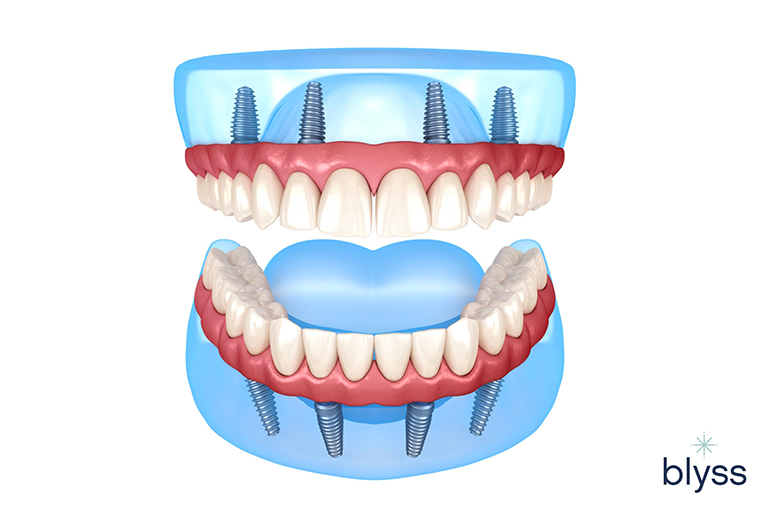How Dental Sense can Save You Time, Stress, and Money.
Table of ContentsFacts About Dental Sense UncoveredDental Sense Can Be Fun For AnyoneNot known Facts About Dental SenseThe smart Trick of Dental Sense That Nobody is Talking About
are clinical tools operatively implanted into the jaw to restore a person's ability to chew or their appearance. They give assistance for artificial (phony) teeth, such as crowns, bridges, or dentures. When a tooth is shed because of injury or condition, a person can experience issues such as quick bone loss, faulty speech, or modifications to eating patterns that result in discomfort.Dental implant systems include a dental implant body and oral implant abutment and may also consist of a joint addiction screw. Dental implants. The dental implant body is operatively inserted in the jawbone in area of the tooth's root. The oral implant abutment is normally affixed to the dental implant body by the joint fixation screw and prolongs with gums right into the mouth to sustain the affixed synthetic teeth
(https://dental-sense.jimdosite.com/)Framework of The Dental Implant System choosing dental implants, talk to your oral provider concerning the possible advantages and threats, and whether you are a prospect for the procedure. Things to consider: Your total health is an essential consider identifying whether you are an excellent prospect for dental implants, the length of time it will take to recover, and how much time the implant may remain in place.
Smoking might affect the recovery procedure and reduce the lasting success of the dental implant. The healing process for the implant body might take several months or longer, throughout which time you usually have a short-term joint in location of the tooth. the dental implant treatment: Thoroughly comply with the dental hygiene directions offered to you by your dental supplier.
An Unbiased View of Dental Sense
Implant failing can result in the need for an additional surgery to take care of or change the implant system. Brings back the capacity to eat Restores cosmetic appearance Assists maintain the jawbone from shrinking due to bone loss Protects the wellness of the surrounding bone and periodontals Assists maintain surrounding (neighboring) teeth secure Improves lifestyle Damage to surrounding natural teeth during dental implant placement Injury to the surrounding tissues during surgical procedure, such as sinus opening Injury throughout surgical procedure (as an example, fracture of bordering jawbone) Poor feature, such as feeling like the teeth do not attack together typically A sensation that the tooth hangs or turning in position arising from an abutment screw loosening Implant body failing (looseness of the dental implant body) because of systemic infection, which might be more probable in clients with unchecked diabetes as a result of local infection in bone and gum tissues supporting the dental implant body as a result of delayed healing, which may be most likely in individuals who smoke Difficulty cleaning the gum tissues around the dental implant, resulting in bad oral hygiene Neglected periodontal illness Post-surgical tingling because of nerve impingement or damages Always notify health treatment carriers and imaging professionals that you have oral implants before any magnetic vibration imaging (MRI) or x-ray procedures.
FDA is not familiar with any adverse occasions reported for MRI or x-ray procedures with dental implants. Oral implants systems are normally made from products that follow global agreement standards of the International Company for Standardization (ISO) or ASTM International. These criteria have details of what makes a safe product.

An oral implant is a framework that replaces a missing tooth. With screw-like devices, the doctor inserts an implant into the jawbone, and it functions as a support for a synthetic tooth, called a crown. A gadget called a joint attaches the artificial tooth to the dental implant. The crown is custom-made to fit the person's mouth and match the color of their teeth.
An Unbiased View of Dental Sense
Some individuals are not qualified for oral implant surgery. It is for oral specialists to operate people with: acute illnessuncontrollable metabolic diseasebone or soft cells condition or infectionIf these problems are settled, a person can have the surgical treatment. In, dental surgeons refrain from operating individuals with: If people with any of the above undertake oral implant surgical treatment, there is a greater risk of the dental implant stopping working.

Oral dental implant surgery is an individualized process. It's not the same for everyone. The complying with provides a general summary of what you can expect your dental professional, oral specialist, periodontist or prosthodontist to do: Position the dental implant operatively. Provide you time to recover. Affix the post and last crown, bridge or denture.
Next off, your specialist will carefully position the oral implant into your jaw. If your dental implant is near the front of your mouth, your dental practitioner will certainly make a short-lived tooth for you to use until you recover.
The smart Trick of Dental Sense That Nobody is Discussing
Your copyright can tell you what to anticipate in your circumstance. Throughout the healing stage, your jawbone must fuse to the oral implant. This process, called osseointegration, is vital for security and long-term success. This procedure can take anywhere from three to nine months. In some instances, it may take much longer.
As soon as your dental implant heals, your dental professional can attach the abutment (little adapter post) and your final reconstruction (crown, bridge or denture). This normally takes concerning one hour to complete and might need a second minor surgical treatment. You should not really feel any pain throughout your oral implant treatment due to the fact that your service provider will certainly use drug to numb your gum tissues.